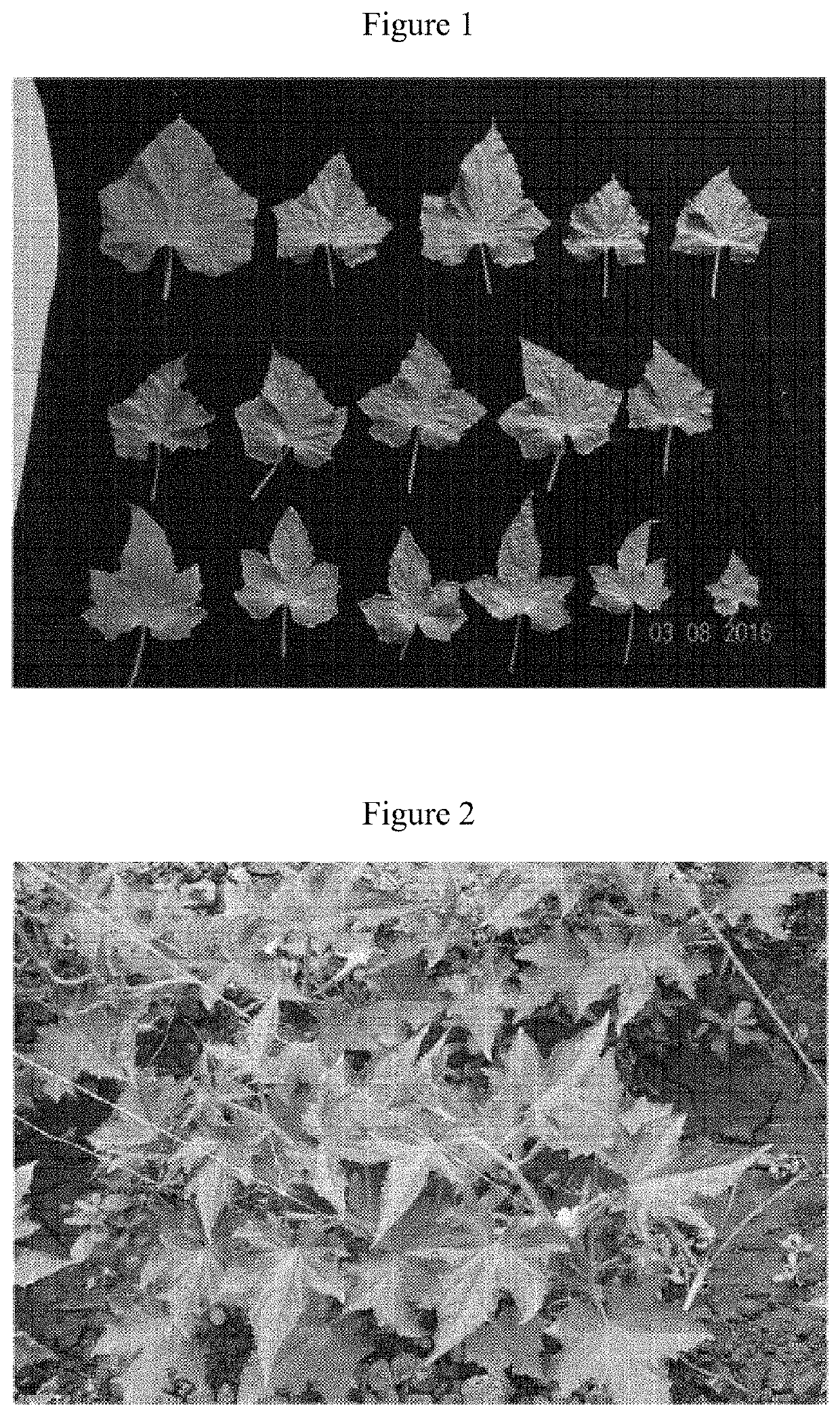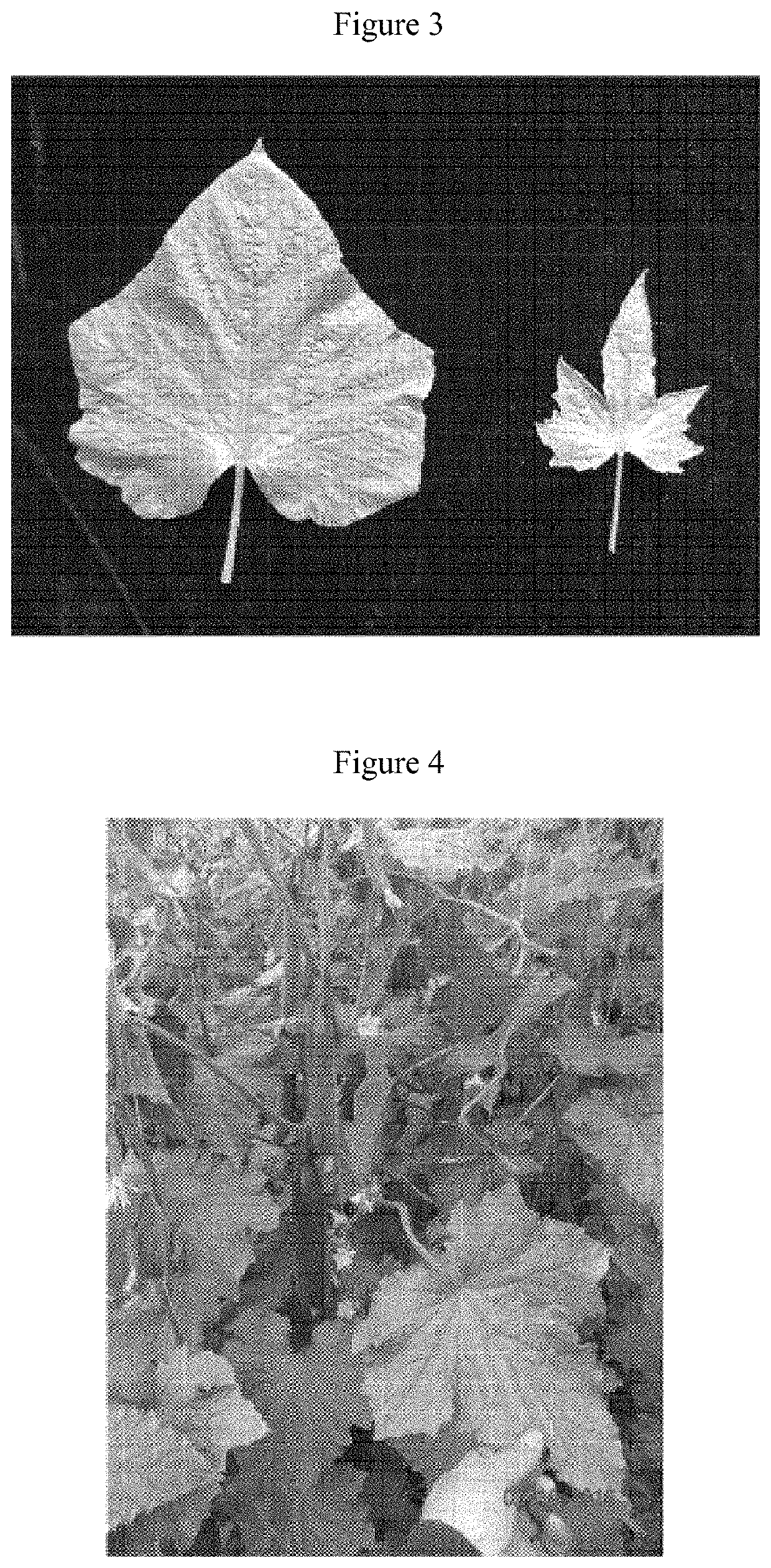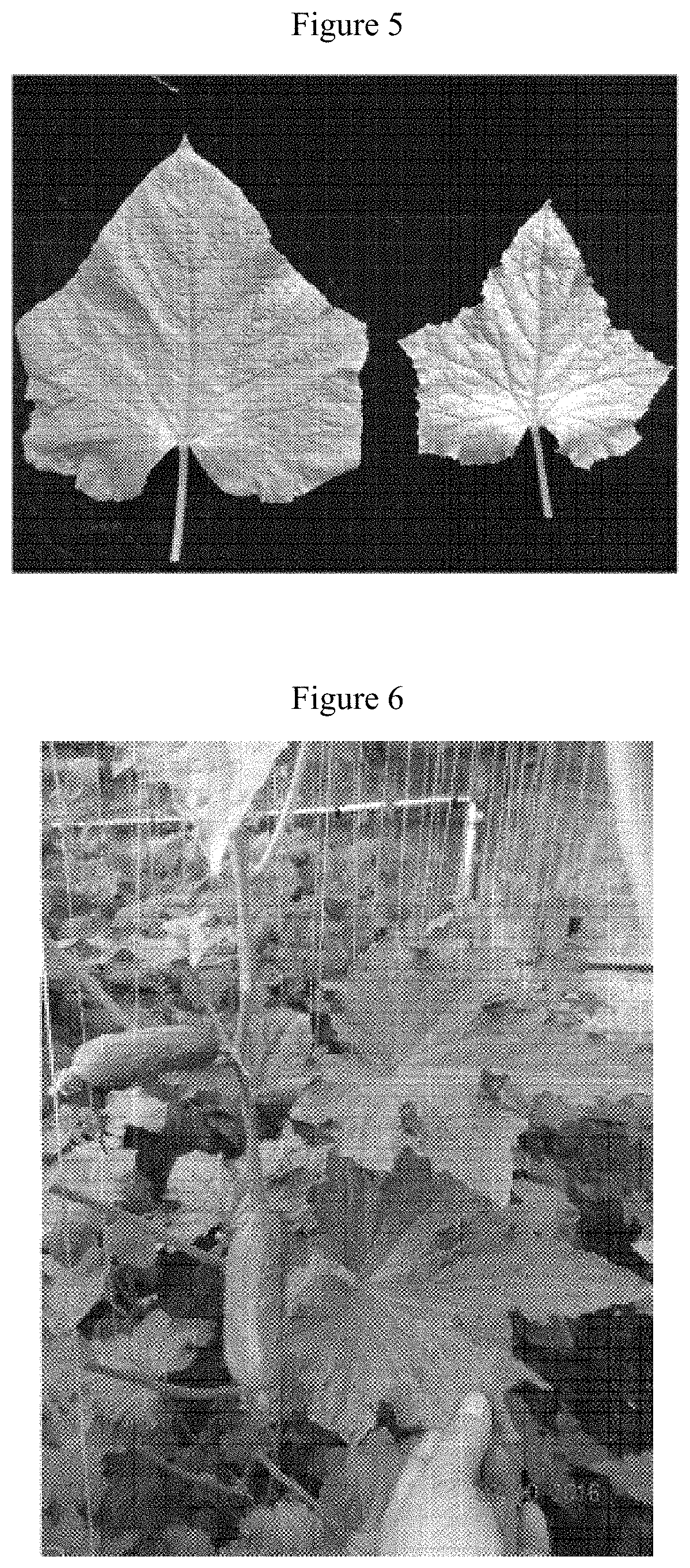Maple-leaf-type cucumber plant
- Summary
- Abstract
- Description
- Claims
- Application Information
AI Technical Summary
Benefits of technology
Problems solved by technology
Method used
Image
Examples
example 1
nalysis Experiment of a Maple-Leaf-Type Cucumber Mutant Plant CC81221
[0068](I) Test Materials
[0069]In the spring of 2012, the inventors planted offspring inbred line materials obtained by multiple composite crosses of the farm variety of Tangshan autumn cucumber, Baiyesan cucumber and European fresh cucumber variety, in the Shangzhuang experimental greenhouse in Haidian District, Beijing, found a maple-leaf-type mutant, and named it as CC81221. The photographs of the mutant are shown in FIG. 2 and FIG. 3.
[0070]The Cucumis sativus L. CC81221 was deposited in China General Microbiological Culture Collection Center (deposit institution address: Institute of Microbiology, Chinese Academy of Sciences, 3th, No. 1 Courtyard, Beichen West Road, Chaoyang District, Beijing, China) with the accession number of CGMCC No. 11285 on Oct. 16, 2015.
[0071]The following cucumbers with a common leaf shape provided by Beijing Beinong Sanyi Cucumber Ecological Breeding Science and Technology Center were ...
example 2
Maple-Leaf-Type Cucumber Plant Variety by Hybridization
[0092]Maple-leaf-type cucumber plants were bred by using the cucumber plant CC81221 with maple-leaf-type leaves or the cucumber inbred lines derived therefrom and having maple-leaf-type leaves, F1 hybrids or heterozygote as the donors of maple-leaf-type leaves. Therefore, any maple-leaf-type cucumber plant bred by the method of the present invention, and the plant CC81221 or the maple-leaf-type cucumber plant derived therefrom, all fall within the scope of the present invention.
[0093](1) On May 25, 2012, an experiment was carried out in an experimental shed in Haidian district, Beijing. The experimental shed was closed and isolated with insect-proof nets. The maple-leaf-type cucumber material CC81221 was used as one of the parents, and three different types of common leaf inbred lines provided by Beijing Beinong Sanyi Cucumber Ecological Breeding Science and Technology Center, i.e. dense-thorn cucumber inbred line M1141 (palm-li...
example 3
of Maple-Leaf-Type Cucumber Varieties by Backcrossing Method
[0101]The backcross method was used in the present invention for the primary purpose of altering or replacing the leaf shape of the original variety while substantially retaining all other desirable genetic, physiological and morphological composition of the original variety.
[0102]The character of maple-leaf-type leaves is controlled by a single recessive nuclear gene. In this case, the test directed to offspring must be introduced to the backcross transformation step, that is, the inbred offspring corresponding to each backcross generation was subjected to phenotypic test so as to determine which backcross plant carries the recessive gene encoding the maple-leaf-type leaves.
[0103]The backcrossing process could be simplified and speeded up by using molecular markers such as SSR, RFLP, SNP or AFLP markers.
[0104](1) On May 25, 2012, in the test shed in Haidian district, Beijing, the maple-leaf-type cucumber plant CC81221 was ...
PUM
 Login to view more
Login to view more Abstract
Description
Claims
Application Information
 Login to view more
Login to view more - R&D Engineer
- R&D Manager
- IP Professional
- Industry Leading Data Capabilities
- Powerful AI technology
- Patent DNA Extraction
Browse by: Latest US Patents, China's latest patents, Technical Efficacy Thesaurus, Application Domain, Technology Topic.
© 2024 PatSnap. All rights reserved.Legal|Privacy policy|Modern Slavery Act Transparency Statement|Sitemap



